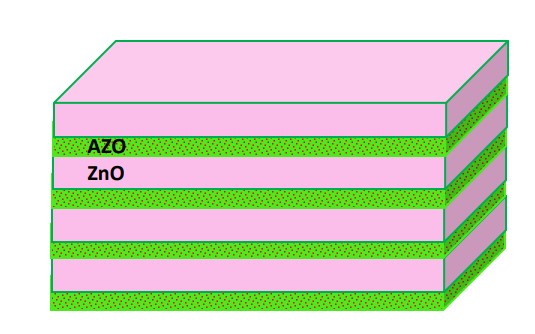Invisibility cloaking is approaching reality, but the materials with this capability are less like the finely woven, silky cape that camouflages a certain trio of wizards and more like a stack of crepes of alternating flavors, only a few nanometers thick.
San Diego State University physicist Lyuba Kuznetsova is testing out different recipes for which combination of crepe layers — composed of purposefully placed metal ions — can alter the path of light in precise ways.
Primer on Perception
There are three main methods of how light might interact with an object to make it invisible.
First, like water in a river flowing around a rock, you can bend light so that it does not go through an object. The water on one side of the rock looks and acts exactly like the water on the other side of the rock, so detectors on either side of the rock would report that the water is the same.
Second, you can have light go through an object and come out the other side completely unchanged. Anyone who has accidentally crashed into a transparent glass door will be familiar with this kind of approximate invisibility.
Unfortunately, see-through surfaces made of water or glass are pretty ineffective at hiding objects underneath or behind them.
The third option is for light to reflect off of an object modified in such a way that the reflected light makes it seem as if the object is not there at all.
Manufacturing Marvel
Stealth technologies that make ships and planes invisible to radar use this third method, emitting their own electromagnetic waves to cancel out the radio waves hitting their surface so that no reflections are detected.
And some materials can make objects invisible to heat cameras, which detect thermal radiation in the infrared portion of the electromagnetic spectrum.
But things get more challenging when trying to make objects invisible to the human eye, which detects light waves in the familiar red-to-violet visible spectrum, with wavelengths between 380 and 750 nanometers.
This is where Kuznetsova’s crepe layers come in.
“The physics is the same but results in mind-bogglingly different phenomena,” Kuznetsova said. “Several centuries-old principles still work, even in materials that are unimaginable.”
Like crystals one one-thousandth the width of a human hair, alternating layers of semiconductors are capable of bending and absorbing light. But the thickness of each layer and the spaces between them partially determine the degree to which visible wavelengths of light are bent.
In collaboration with Brookhaven National Laboratory, Kuznetsova and her students, including alumna Priscilla Kelly, have combined layers of zinc oxide with and without aluminum added, nearly as thin as the distance between individual atoms, into transparent man-made metamaterials. This strategy has achieved some unique light-bending properties in the near-infrared spectrum, just below the threshold for visible light. Additionally, these materials are less expensive than similar ones made with gold.

The SDSU team is currently developing computational models to predict which other chemicals and manufacturing conditions might work best for bending light in the visible range.
Then they will shine extremely precise lasers on these nanoscale crepes to see whether their recipes result in something more fantastic than our current reality.

